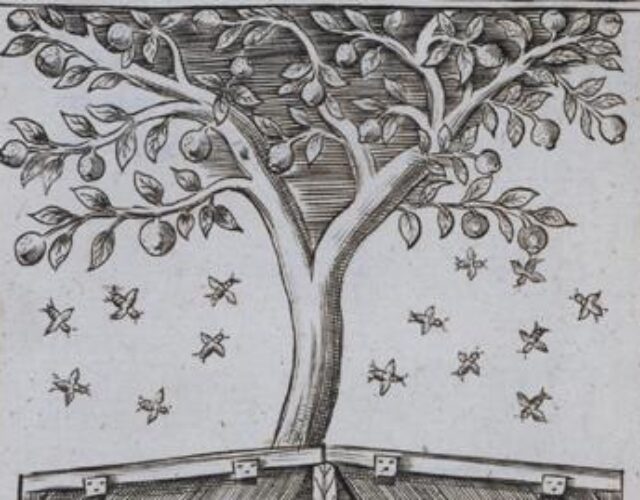In the late 1970s, after the end of the Vietnam War, many Vietnamese and Laotian people began noticing that a sticky yellow liquid periodically rained down from otherwise sunny skies. Witnesses claimed the strange substance killed plants and sickened people.
One ethnic group seemed especially affected by the substance: the Hmong, who had fought with France against Communists in Southeast Asia since the 1950s in the sparsely developed mountains in northern Vietnam and Laos. The CIA later recruited and mobilized Hmong soldiers, making them the target of sectarian violence when U.S. troops left the region. The newly empowered Communist regimes attacked the remaining Hmong, forcing them to flee to refugee camps in Thailand or face labor and reeducation camps in their home countries.
After a lengthy investigation, U.S. analysts concluded in 1981 that the substance, dubbed “yellow rain,” was a chemical weapon made of fungus toxins and created by the Soviet Union. The U.S. secretary of state at the time, Alexander Haig Jr., announced that the Soviet Union had given the weapon to the Viet Cong and Pathet Lao, who dropped it on the Hmong (and other ethnic groups) in their villages and while they fled to refugee camps.
The Hmong’s suspicion of mysterious liquid falling from the sky wasn’t baseless: their American defenders, after all, had dumped the chemical herbicide known as Agent Orange on millions of Vietnamese between 1961 and 1971. But if the Soviet Union was really stockpiling and distributing chemical and biological weapons, it would be breaking a century of international laws and treaties. The Soviets denied the accusations vehemently and soon found an unlikely ally: Matt Meselson, a Harvard University biologist.
Meselson was skeptical of the claims made by Haig and in 1983 acquired samples of yellow rain from American officials in order to analyze them. Meselson found that the substance included large amounts of hollowed-out pollen indigenous to Southeast Asia. This alone made Haig’s claims seem dubious: pollen would be an extremely ineffective dispersal method for poison. Meselson’s team also realized the pollen was commonly eaten by giant Asian honey bees, which digest the protein inside pollen grains but not the outer shell, accounting for the hollowed out shape. Furthermore, the team found that the concentration of mycotoxins was not significantly greater in samples of yellow rain–covered leaves than on plants anywhere else in Southeast Asia.
If the accusations leveled by U.S. officials were correct, the Soviet Union would be importing tons of predigested pollen from Southeast Asia, only to turn around and send that same pollen back as a difficult-to-disperse chemical weapon. Meselson proposed a simpler explanation: yellow rain was no weapon at all—it was harmless bee feces. The health problems being reported were the result of poor sanitation and lack of food among people being bombed and raided by Communist soldiers. Meselson theorized that the connection between yellow rain and sickness was part hyperbole, part imagination.
After reviewing the original study done by U.S. investigators, Meselson’s team found inconsistencies and contradictions in the testimony of people who witnessed yellow rain. The liquid sometimes rained down when there wasn’t a plane in sight. Most of the health problems could be explained by dysentery and nutritional deficiencies in refugee camps. It also became clear that the original interviewers had asked leading questions and unconsciously manipulated testimonies.
Meselson’s findings were initially met with skepticism by other scientists and the U.S. government. It would take thousands of bees to make enough waste to look like rain. Why would so many bees be in such specific locations, and why would they be pooping at the same time?
In 1989 a Canadian biologist teamed up with a Malaysian scientist to solve the puzzle. The most revealing detail of yellow rain was when it tended to fall: hot, sunny days. The scientists measured the body mass of hundreds of bees before they left their hives and after they came back, finding that the insects lost 20% of their weight on the return flight. The bees would usually leave together in a giant swarm, defecate, and come back to care for their larvae. The scientists confirmed that the phenomenon occurred most frequently on warm days.
Why were they excreting more when it was hot out? Asian honey bee larvae are sensitive to high temperatures and become deformed if they overheat. The adult bees needed to reduce their mass so they could keep their larvae cool inside the hive (the greater their body mass, the more heat they would generate). This and later research led to the general acceptance of Meselson’s explanation, although the U.S. government never retracted the original accusations against the Soviet Union.
The Westerners’ conclusions about yellow rain are still a sore subject among the Hmong, but despite more recent efforts by journalists and scientists, no connection between yellow rain and a Soviet bioweapons plot has ever been established.
As a whole, the Hmong continue to suffer the repercussions of the war. Only a small percentage of those who were displaced were resettled in the United States. More than 40 years later, the Hmong who remained in or returned to Laos and Vietnam are often shunned by their neighbors or detained and accused of being American spies by their government. Many refugees ended up in Thailand, where today they are increasingly being deported. In 2009 the Thai government shut down its refugee program with Laos and sent away thousands of Hmong who now live in limbo, afraid to return to their home country but not allowed to live anywhere else.
The faint silver lining in the yellow rain controversy is that whenever a new theory is brought up, it calls attention to the plight of the Hmong. However, given the current political climate in the United States, it seems unlikely that the country that caused many of the Hmong’s problems will step up to help them now.




